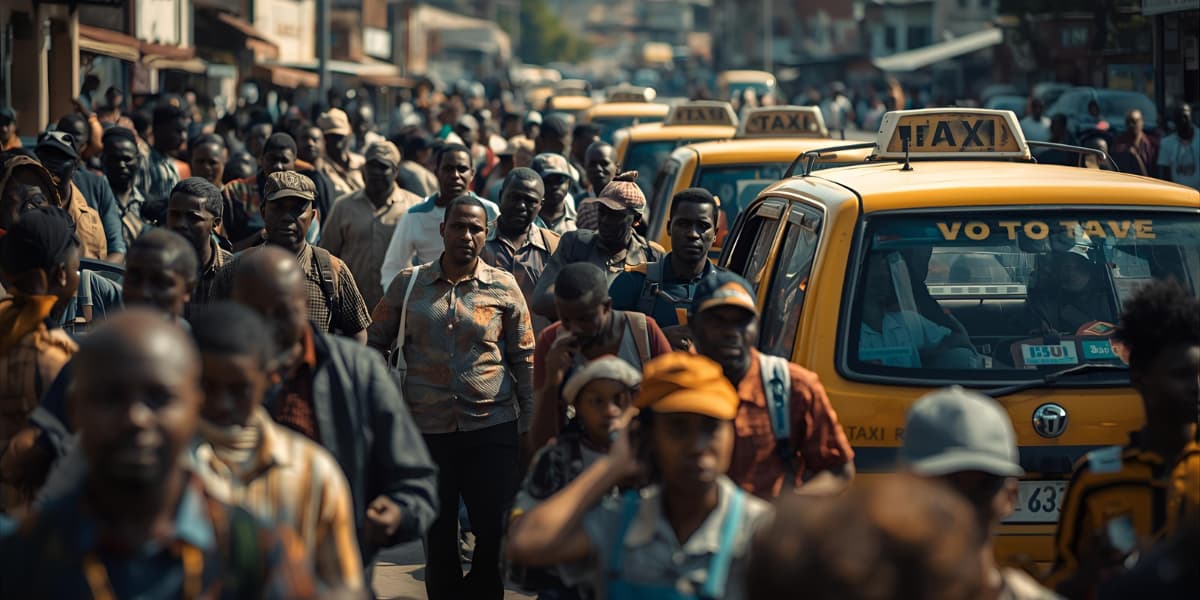Taxi ban affects 7 routes: Powerful South Africa warning
The recent taxi ban in South Africa has sent shockwaves through communities that rely heavily on minibus taxis for daily commuting. With seven major routes shut down in Mfuleni and surrounding areas, thousands of commuters face disrupted routines, financial strain, and safety concerns. This sudden decision highlights a deep-rooted transport crisis that demands urgent solutions.
Taxi ban and its immediate effects
The taxi ban instantly affected residents of Mfuleni, Khayelitsha, and Nomzamo, where many families depend on minibus taxis for school, work, and daily errands. The closure of these seven routes forced commuters to seek alternatives, often at higher costs or with longer travel times. Golden Arrow buses and Metrorail services were introduced as substitutes, but overcrowding and limited capacity quickly became major challenges. For low-income households, this shift added unexpected financial pressure.
Safety concerns driving the taxi ban
The decision to implement a taxi ban was not taken lightly. Authorities responded to escalating violence between rival taxi associations, CATA and CODETA, whose turf wars had endangered the lives of passengers and bystanders. Incidents of shootings, intimidation, and road blockades created an unsafe environment that could no longer be ignored. The government prioritized saving lives over maintaining convenience, framing the ban as a protective rather than punitive measure.
Economic ripple effects of the ban of taxi
The taxi ban did more than disrupt transport, it rippled through the local economy. Street vendors lost customers, workers struggled to reach their jobs on time, and school attendance dropped in affected areas. Many small businesses that relied on steady commuter traffic reported sharp declines in sales. The ban also raised questions about job security for taxi drivers and operators, who suddenly found themselves without income for a full month. This dual crisis safety and livelihood underscores the complexity of South Africa’s taxi industry challenges.
Community voices reacting to the ban of taxi
The taxi ban triggered mixed emotions within local communities. While some residents welcomed the measure as a necessary step to restore safety, others criticized it for punishing innocent commuters who had no role in the violence. Parents voiced deep concerns about the safety of children walking longer distances to alternative transport points. Civic groups urged authorities to open dialogue with both taxi associations to prevent further harm and rebuild trust between the public and transport operators.
Government’s role in managing the ban of taxi
The South African government framed the taxi ban as part of its broader responsibility to protect lives and ensure public order. Officials announced that enforcement would be carried out by police and traffic officers to prevent illegal operations. The Department of Mobility also promised to monitor the situation closely, assessing whether the 30-day restriction should be extended or adjusted. By imposing the taxi ban, the government aimed to send a powerful message: safety cannot be compromised, even if it disrupts daily life.
Searching for sustainable transport solutions
Beyond the temporary taxi ban, experts emphasize the need for long-term strategies to stabilize the transport sector. Suggestions include stricter regulation of taxi associations, transparent licensing systems, and improved infrastructure near high-risk routes. Advocacy groups also encourage the adoption of modern technologies such as GPS tracking and surveillance cameras to increase accountability. For more insights, this external safety resource highlights practical guidelines that could shape a safer, more reliable future for commuters across South Africa.
Impact of ban of taxi on education
One of the most pressing consequences of the taxi ban has been its effect on education. Thousands of learners depend on minibus taxis to reach schools, especially in areas like Khayelitsha and Mfuleni where alternatives are scarce. Teachers reported significant drops in attendance, with some students missing entire weeks of lessons. Parents expressed fear that prolonged disruptions could widen educational inequalities, particularly for children in low-income households who cannot afford private transport options.
The affects healthcare access
Healthcare facilities were not spared from the ripple effects of the taxi ban. Patients in need of chronic medication or regular treatments found it increasingly difficult to reach hospitals and clinics. In emergencies, delays in finding transport heightened risks for vulnerable individuals. Community health workers highlighted how the ban exposed deep structural weaknesses in the transport network, underscoring the urgent need for better integration between healthcare and mobility systems.
Internal challenges within the taxi industry
The taxi ban also drew attention to the unresolved internal conflicts plaguing South Africa’s taxi industry. Rivalries between associations like CATA and CODETA have historically led to violent turf wars, but the ban made it clear that commuters ultimately bear the heaviest burden. Without reforms, the cycle of violence and disruption could repeat itself. An internal guide on transport reform offers valuable insights into how community-driven solutions might help stabilize the sector while protecting public interests.
Long-term implications of the taxi ban
The taxi ban serves as a stark reminder of the fragility of South Africa’s public transport system. Beyond immediate disruptions, it has sparked urgent debates on accountability, regulation, and safety standards. Industry experts stress that sustainable solutions must balance commuter convenience with rigorous enforcement and conflict resolution mechanisms. The ban also highlights the importance of community engagement and transparent decision-making to prevent future crises.
Conclusion: Navigating the future after the taxi ban
In conclusion, the Taxi ban in Mfuleni and surrounding areas is more than a temporary disruption, it is a wake-up call for authorities, operators, and commuters alike. While safety remains the primary concern, the ban underscores the urgent need for systemic reforms, improved infrastructure, and modern monitoring systems. Only through coordinated action and long-term planning can South Africa ensure a safe, reliable, and equitable transport network for all residents, while preventing future crises that threaten lives and livelihoods.




